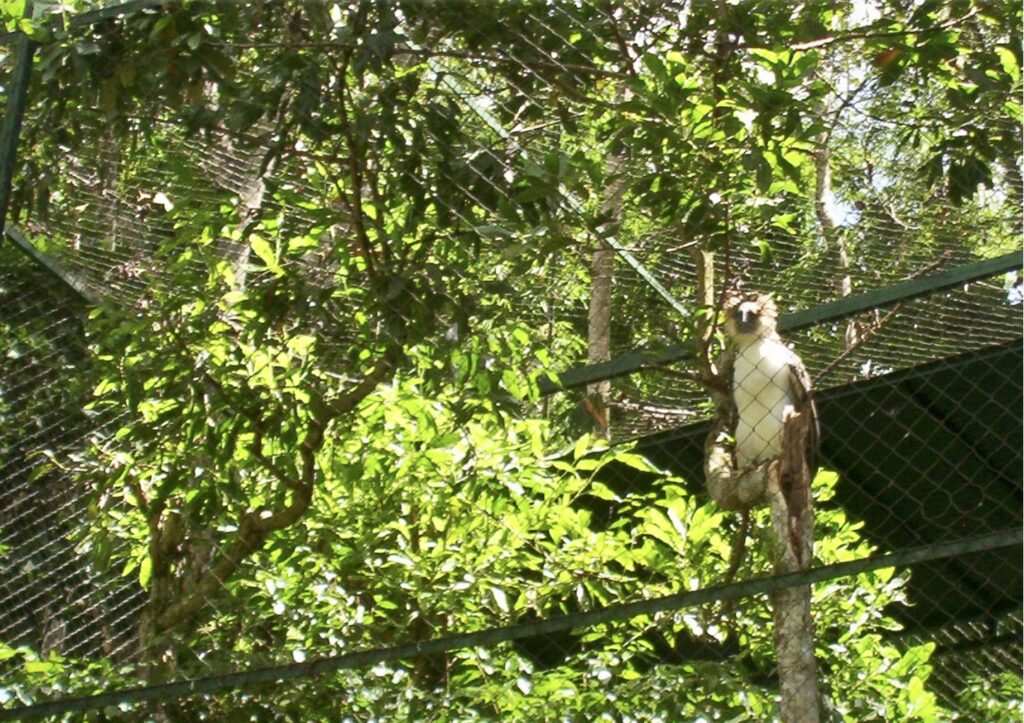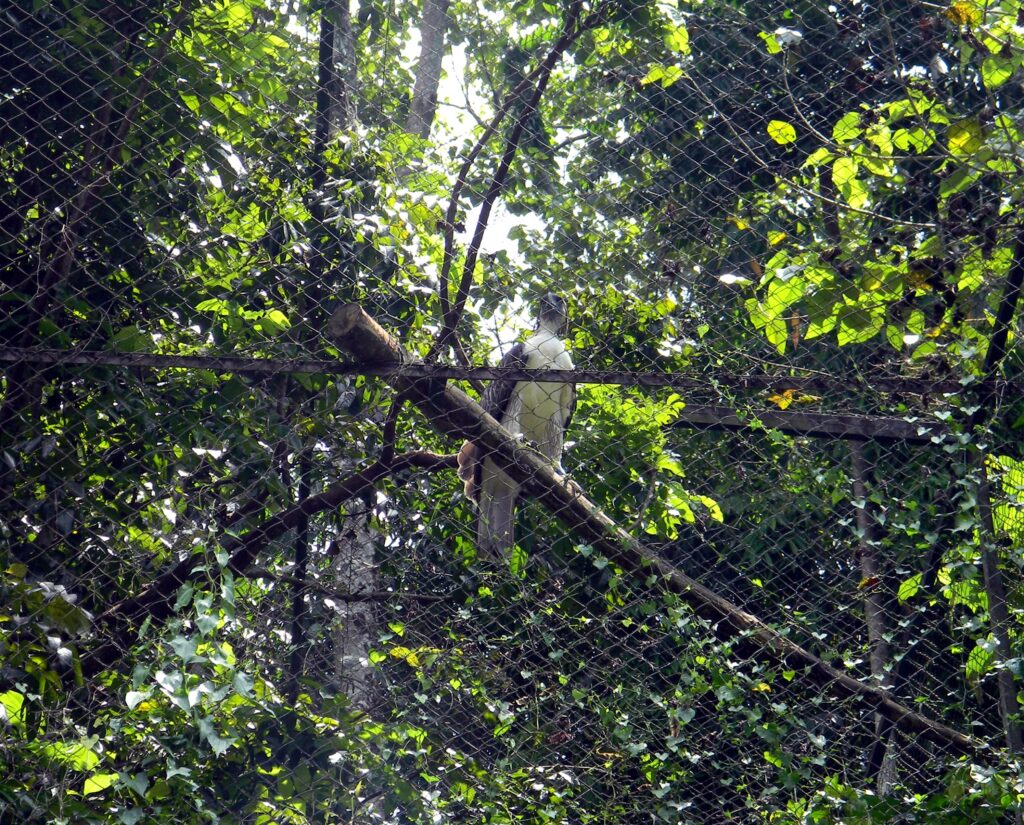Text and Photos by Henrylito D. Tacio
It used to be called the Philippine monkey-eating eagle. In fact, its scientific name tells us so. The generic name, Pithecophaga, comes from the two Greek words: phitekos or “monkey” and phagein meaning “eater.”
But in 1978, through Presidential Decree No. 1732, the old name was dropped, and the Philippine eagle came into existence. It was found out that monkeys actually comprised an insignificant portion of their diet. It also preys on a whole host of animals, both large and small. It has been known to hunt bats, civets, flying squirrels, rats, snakes, small deer, and bats.
A magnificent bird endemic to the Philippines, the Philippine eagle, is larger than the American bald eagle. In fact, it is the second world’s largest eagle species, next to South America’s Harpy eagle.
The Philippine eagle stands a meter high, weighs anything from four to seven kilograms, and has a grip three times the strength of the strongest man on earth. With a wingspan of nearly seven feet and a top speed of 80 kilometers per hour, it can gracefully swoop down on an unsuspecting monkey and carry it off without breaking flight.
In the past, maya was the country’s bird icon. But in July 1995, then-President Fidel V. Ramos signed Proclamation No. 615, naming the Philippine eagle as the national bird. Aside from being found only in the Philippines, it should also be a source of national pride.
“The bird is chosen as a national symbol as it represents the strength, uniqueness, a love for freedom, and power of the Filipino people,” someone commented.
The Philippine eagle is on the brink of extinction. In 1994, the International Union of the Conservation of Nature (IUCN) and BirdLife International listed this bird of prey as critically endangered.
In a race against time, conservationists are working double-time to save the Philippine eagle from oblivion. It is one of the world’s rarest eagles, with an estimated 400 nesting pairs left in the wild.

Pag-asa 
Bird icon
While the Philippines is composed of more than 7,000 islands, the Philippine eagle is found only on three of them, all within the northern and eastern regions of the country. In the past, Philippine eagles abound in the forests of Mount Apo and other parts of Mindanao. They can also be seen flying over in the forests of the Sierra Madre in Luzon and Samar and Leyte in the Visayas.
The Philippine eagle is second only to the Madagascar sea eagle in rarity. In size, it beats the American bald eagle; it is the world’s second-largest – after the Harpy eagle of Central and South America.
Philippine eagles have no natural predators except humans. They are threatened by habitat destruction and hunting.
“The forest is the only home for the Philippine eagle,” says the Philippine Eagle Foundation, Inc. (PEFI), a non-governmental body that deals with the conservation and protection of the endangered bird. “It is where they obtain food, reproduce, and nourish their offspring.”
Unfortunately, the Philippines is fast losing its forest resources. Between 2000 and 2005, the country lost about 270,000 hectares of forest a year, according to a study made by the regional office of the Food and Agriculture Organization.
A pair of Philippine eagles needs at least 7,000 to 13,000 hectares of forest as a nesting territory. Their preferred habits include primary forests in the lowlands and at mid-elevation.
Hunting also threatens them to death. “At least one Philippine eagle every year because of shooting,” PEFI states. “As more of our forests are lost, Philippine eagles go farther and farther from their usual hunting grounds in search of prey to hunt. This usually brings them towards human settlements and their livestock, which often results in conflict with the Philippine eagle on the losing end.”
“The Philippine eagle is the largest predator we have,” says Dr. Dennis Joseph I. Salvador, PEFI executive director. “By using the Philippine eagle as the focal point of conservation, we are, in the process, saving wildlife and their habitat.”
It was in 1896 when the bird of prey was first discovered by English naturalist John Whitehead in Samar.
The PEFI said Philippine eagles are solitary and territorial creatures. They can live up to 40-plus years in captivity but probably much less in the wild. They take 5-7 years to sexually mature.
The female Philippine eagle lays a single egg every two years. Around 8-10 days before laying an egg, the female eagle does not eat, drinks lots of water, and holds her wings drooping.
The eagle parents wait for their offspring to make it on their own (usually within two years) before producing another offspring, according to the prime mover in eagle conservation.

Here’s an interesting item about this bird: The egg is incubated alternately by both eagle parents for about 58-60 days, with the male eagle doing most of the hunting during the first 40 days of the eaglet’s life while the female stays with the young.
Efforts to save the Philippine eagle were started way back in 1965 by Dioscoro S. Rabor, the founding father of the Philippine conservation effort. But he was ignored by most of his compatriots. Fortunately, he was able to elicit the support of the famous aviator, Charles A. Lindbergh.
From 1969 to 1972, Lindbergh spearheaded a drive to save the bird, which he called the “noblest flier.” When he died, the conservation effort was sustained through the initiatives of Peace Corps volunteers in cooperation with the Parks and Wildlife Office.
We need to save our very own Philippine eagle. As former President Ramos puts it: If the national bird dies, so will all the country’s efforts at conserving its natural resources and treasures.

